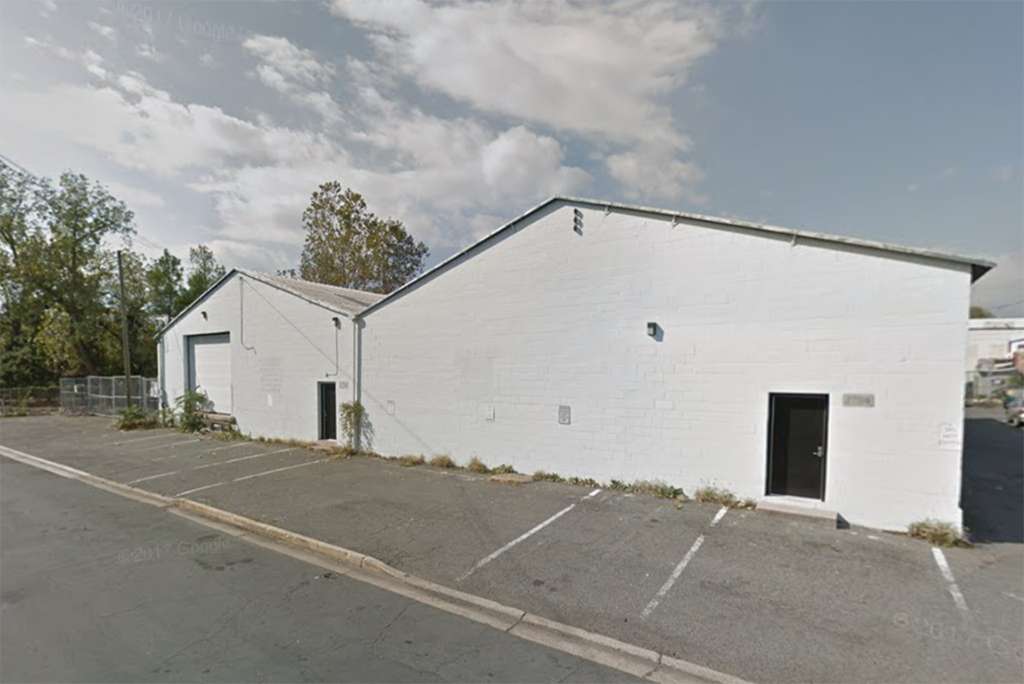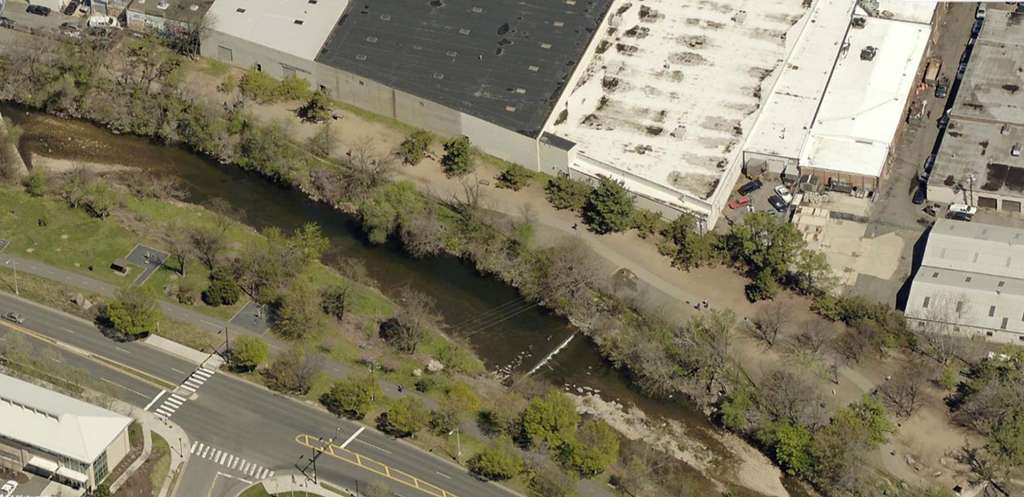A report on the future of the Shirlington Dog Park did not recommend reducing its size, but still left members of the Four Mile Run Valley Working Group with plenty of questions.
The report, prepared by a committee of five group members over the summer, made various recommendations for the park’s short, medium and long-term future.
It looks to find ways to manage stormwater runoff into Four Mile Run from surfaces that do not absorb rainwater and to ensure the park remains well-used. The report was drafted after the Arlington County Board sent plans to reduce its size back to the drawing board.
The report said taking down two county-owned warehouses on S. Oakland Street, adjacent to the park, would help manage stormwater runoff and allow a connection between the dog park and a proposed arts district nearby.
“In addition to addressing some adjacent stormwater issues, this would serve an array of complementary objectives such as integrating this new park area and the dog park with the arts district, provide a flexible-use area for festivals and arts events, provide swing space for recreational functions as Jennie Dean Park is developed, and improve connectivity and open up the line of sight from South Four Mile Drive into the park,” the report reads.
But in suggesting those warehouses be taken down, some group members argued the committee exceeded the scope of its study.
“I felt as though the report spent a lot of time on issues that frankly were not in the group’s charge,” said group vice chair Robin Stombler. Others noted that a report on a potential arts district suggested using the warehouses as space for artists.
Longtime civic leader Carrie Johnson expressed her disappointment at what she described as a “disputed space problem,” and urged the group to find a compromise between the warehouses’ use in the arts district or removal for the dog park.
“I would have hoped to hear less fighting over acreage and more about how it could be used for everybody’s benefit,” she said.
In the short-term, the group recommended various small ways to help manage stormwater at the park, including no longer mowing the grass, protecting existing trees and limiting access to the stream.
But in the medium term, the report called on county government to show leadership in managing stormwater runoff from its buildings to help protect the park. They also urged an expansion of a program where businesses receive grants and other incentives to install ways to manage stormwater through green roofs, rain barrels and the like.
The area’s current zoning encourages making changes through redevelopment, as opposed to incentivizing existing businesses to make those environmentally-friendly tweaks.
“There seems to be no answer here, because the county seems unable to change anything for the existing businesses until they redevelop,” said Anne Inman, a group member.
The report noted that the need to balance stormwater with the park’s popularity is a “catch-22,” as “leaving the park in its current condition is not a viable long-term solution, but efforts to mitigate the environmental issues would trigger significant, costly and undesirable changes to the park.”
Group chair Charles Monson said they will not look to endorse any report prepared by a committee, but will instead use them to guide their thinking as planning the area’s future continues.
The report’s full recommendations are after the jump.
Short-term
- Block access to informal path outside the dog park fence to minimize soil compaction
- Discontinue mowing along fence edge to increase vegetative buffers
- Increase plantings along the stream bank, where soil conditions permit
- Add park “snags” such as large stumps or rocks at entrances to encourage dogs to pee on them when they enter the park, instead of urinating on trees
- Create barriers to protect existing trees
- Increase availability of trash containers and bags on both sides of the stream (including in Shirlington Park) to more effectively collect dog waste
- Improve signage and public education regarding pollution, stream warnings, environmental issues and dog park rules
- Limit access to the stream to designated entry points to reduce stream bank erosion
- Reclaim county-owned land at Oxford Street and widen the dog park at its narrowest point and reconfigure entrance gates
- Add parking meters and enforce a maximum two-hour parking limit to better distribute usage of existing parking
Medium-term (next 5-10 years)
- Develop a pilot program using economic incentives similar to facade improvement grants for existing businesses to capture stormwater runoff from rooftops for preventing erosion, watering trees and dispersing stormwater more slowly into the ground to improve water quality
- Enhance the existing Shirlington Dog Park sponsoring group by recruiting and training additional volunteers to assist in managing the dog park with specific emphasis on erosion and pollution prevention, tree protection, public education about environmental conditions, invasive species removal, and minimizing use of informal trails
- Explore alternatives for managing expected growth in dog park usage by considering best practices in other jurisdictions
Long-term
The “dog park area” boundaries should be recognized as including both the Nelson/Oakland parking area (required by county ordinance for any park) and the pathway at the eastern main gate to the pedestrian bridge as well as the western path from the dog park gate to Walter Reed Drive. This could provide additional areas for reconfiguration, drainage, filtration, planting and buffering.
Longer term considerations should a triggering event (like a hurricane or major storm) occur:
- Amend and/or remediate existing hard pack ground to provide soil, improve
- permeability and better support vegetation and trees
- Reconfigure existing walkway from the pedestrian bridge
- Work with owners of adjacent properties to reconfigure the existing walkway from
- Walter Reed Drive, much of which is already on county-owned land
- Reconfigure existing parking (assuming a long-term parking solution has been developed elsewhere in the planning area) and incorporate existing parking area while retaining ADA parking access directly adjacent to the dog park
- Replace existing asphalt with permeable pavers
Photo No. 2 via Google Maps




